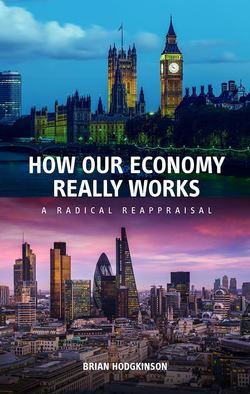Читать книгу How our economy really works - Brian Hodgkinson - Страница 13
На сайте Литреса книга снята с продажи.
5 Structure of Industry
ОглавлениеTHE PRESENT STRUCTURE of industry in Britain is highly complex. It varies from sole traders, like local craftsmen or financial advisers, to partnerships of skilled or professional workers, like small builders, lawyers or dentists, to big companies that control many sites, like chain retailers or major manufacturers, and finally to multinationals, often foreign owned, that run vast empires of various productive units around the world.
This complexity has developed gradually. Its causes are rarely discussed. They lie in the history of how land, labour and capital have been combined and owned, but these causes still operate today, despite dramatic changes in technology and much else. Land enclosure released, or rather drove, workers from the land on which many had worked as tenants under copyhold or similar customary rights. This supply of unemployed workers moved into towns, where they became dependent on wage labour for their survival. Employers enjoyed the ability to pay the lowest wages that the unemployed would accept, so that profits rose rapidly, enabling them to expand, often from small family firms to multiple site establishments. Such profits were substantially economic rent, unrecorded as such by the freeholders receiving them. Banks gave advances for investment on the security of land and expected ‘profits’.
By the nineteenth century many firms became too large for the proprietors to finance and to bear the risks on their own. The ingenious device of limited liability provided the answer. The absentee shareholder was born. Railways, cotton, wool, steel, shipping, tobacco and so on became industries run by companies financed by thousands of such shareholders, many of whom had become rich by landholding. A handful of company directors, themselves shareholders, ran each company, increasingly with independence from the views of the shareholders themselves, especially when these were content to become mere rentiers, receiving dividends paid out of profits, the derivation of which might not even interest them.
By the twentieth century the connection between ownership and actual productive activity became even more tenuous. Insurance companies and pension funds, with money raised from millions of savers, ‘invested’ in these ever expanding limited liability companies, in order to receive dividends and, even more, to make capital gains from growth and takeovers. Such second tier firms themselves bought land in city centres, which, while serving as office space, also enabled them to benefit greatly from the almost universal rise in land values associated with a growing population and economic development. A host of financial institutions, such as investment trusts and hedge funds, grew up like satellites.
So much has this general evolution of industry become the accepted background to the economy in Britain that it seems preposterous to most people, including employees themselves, that firms could be owned by those who work in them. Yet one only has to look at the economy from a fresh viewpoint to see through the complexities of the current structure of industry and to realise how much simpler, and above all how much more in accordance with economic justice, the situation could be.
What does an industrial town look like seen from an aeroplane? Each productive unit on the ground is a function of land, labour and capital co-operating to produce goods and services. There are no signs of shares or shareholders. One might conclude that each is a firm, or perhaps one division of a large firm, of which the people working there are the owners. Although most people today would imagine an organisation with absentee shareholders, the reality is that the productive unit itself is essentially complete with its three productive factors. The trouble is that the image of the shareholders leads to the distorted view that the whole economy consists primarily of the claims upon the productive assets of firms, rather than being the productive assets themselves. Expert commentators talk of the economic outlook improving when the Stock Exchange index rises. Investment becomes the issue or purchase of shares, rather than the creation of productive capital. The success of entrepreneurs is judged by the money they make and not by the value of their services. What Keynes called the ‘money illusion’ in relation to workers’ tendency to measure wages merely in money values has become the general viewpoint of the population at large.
